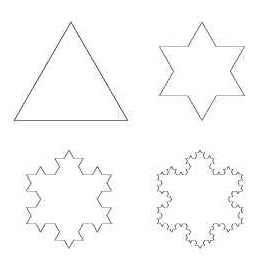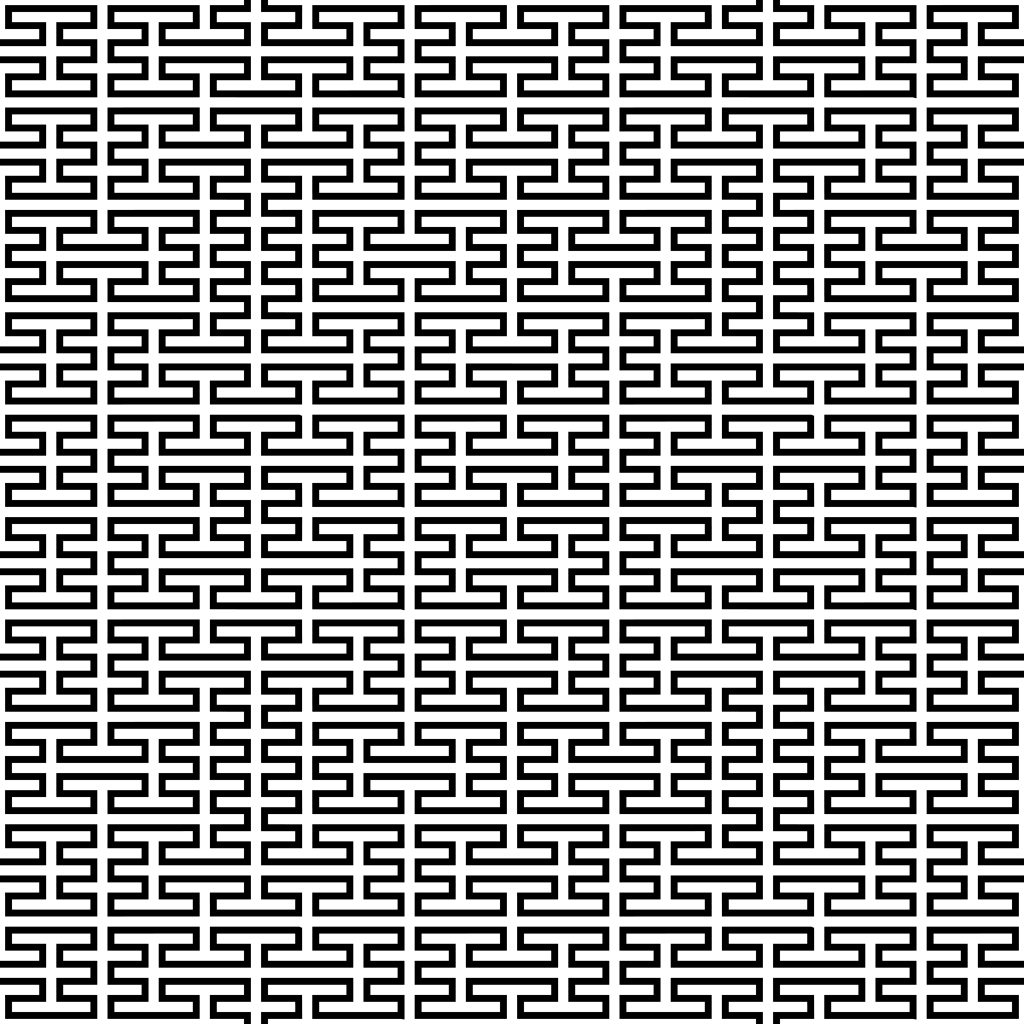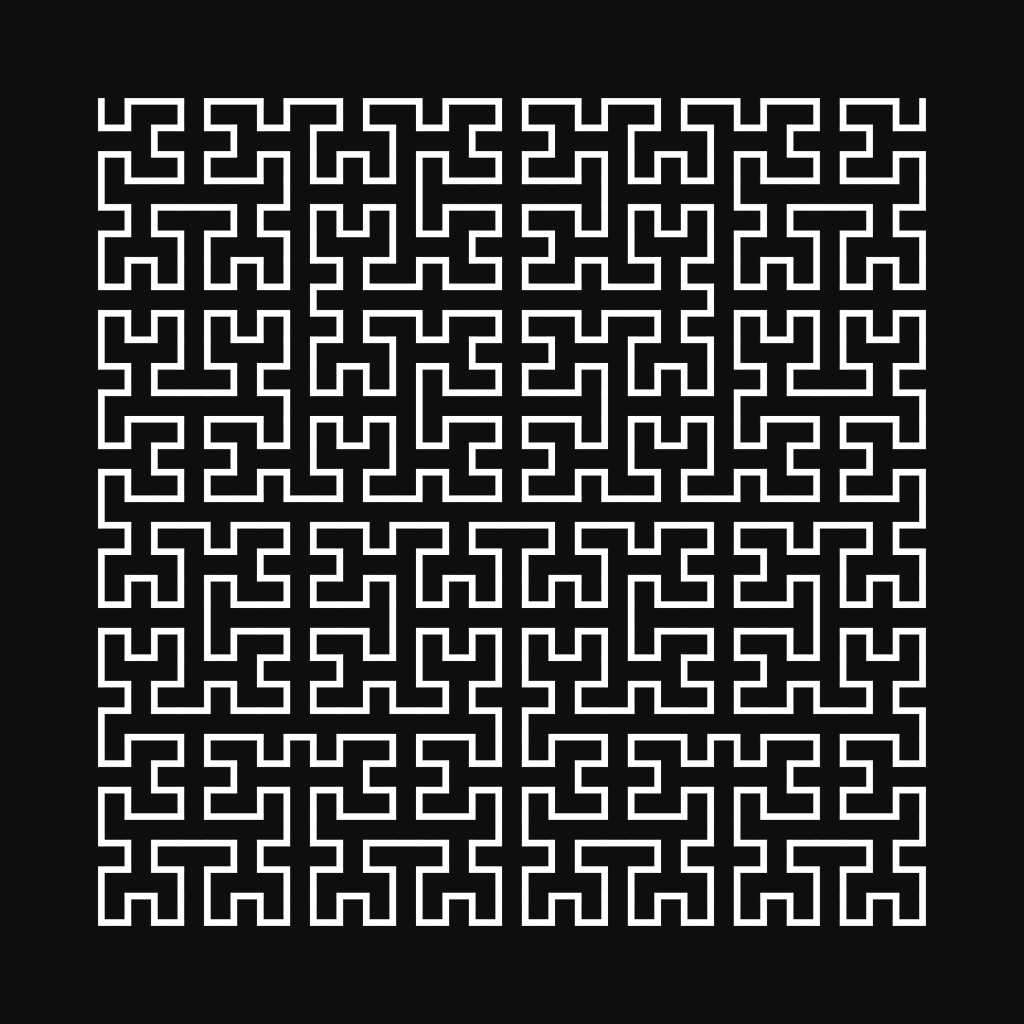And G‑d created man in His own image, in the image of G‑d created He him; male and female created He them. And G‑d blessed them; and G‑d said unto them: “Be fruitful, and multiply, and replenish the earth, and subdue it . . . .
Genesis 1:28
G‑d created man, male and female, and commanded them to be fruitful and multiply, fill the earth, and subdue or conquer it. While the literal meaning of this verse is apparent—fill the earth with your progeny by procreating[1]—it begs a question. Specifically, the phrase “fill the earth” seems superfluous—wasn’t it enough to say “Be fruitful and multiply”? Indeed, the Hebrew word milupim[2] (“to multiply”) is etymologically related to the word mil’u[3] (“to fill”).[4] If humans were to multiply, as commanded by G‑d, they would naturally fill the earth. It seems that the phrase “fill the earth” carries an additional meaning. And what is meant by subduing the earth?
The word mil’u (“to fill”) has a fractal (as in fractal geometry[5]) connotation. We can use the procedure called Otiyot beMilui (“filled letters”) to expand the word by replacing each letter in that word with a word for that letter. Let us take, for example, the word av (“father”). It is spelled alef-bet. The numerical value of this word is 3.[6] The first iteration of milui (filling out the word) replaces each letter with its name. So, the letter alef (spelled alef-lamed-peh) is replaced with three letters: alef, lamed, and peh; and the letter bet (spelled bet-yud-tav) is replaced with three letters: bet, yud, and tav. Putting all these letters together, we have a new five-letter word spelled alef-lamed-peh-bet-yud-tav, with a numerical value of 523.[7] For the next iteration of milui, we need to replace each letter in this new word with the spelling of that letter. So, the letter alef becomes alef-lamed-peh; the letter lamed becomes lamed-mem-dalet; the letter peh becomes peh-heh; the letter bet becomes bet-yud-tav; and the letter tav becomes tav-vav. Putting it all together, we have a new word spelled alef-lamed-peh-lamed-mem-dalet-peh-heh-bet-yud-tav-tav-vav, which has a numerical value of 1088.[8] And so on. The fractal nature of this procedure is evident in the fact that we apply the same algorithm for each iteration.
Similarly, in fractal geometry, we create curves or figures by iteratively applying the same algorithm. For example, to produce a Koch snowflake, an example of a fractal curve, we start with an equilateral triangle. We divide each side into three parts, remove the middle part, and double it by pushing the bend outward. This procedure is repeated with each step, creating a smaller equilateral triangle. The result is a snowflake:

It is best to see it as the number of iterations grows:

The fractal curves that interest us most are called space-filling curves. Loosely speaking, a space-filling curve is a curve traced by a point moving on a two-dimensional plane (or in a three-dimensional space) in a way that attempts to fill the entire plane (or space). The Italian mathematician Giuseppe Peano[9] described the first example of such a curve in 1890. This eponymous curve passes through every point of a unit square. Here are three iterations of the Peano curve:

The limit of this curve, when the number of iterations approaches infinity, is a space-filling curve.
Another example of a space-filling curve is the Hilbert curve:

It is best to watch it unfold in real time. Here is a video of the Hilbert curve filling the square:
“Hilbert Curve,” by CalmWords (2013), https://commons.wikimedia.org/w/index.php?title=File%3AHilbert_Curve_-_6.webm
What is amazing about Peano and Hilbert curves is that they start as one-dimensional lines but, with each iteration, they approach the dimension[12] of 2—the same as a two-dimensional surface. Space-filling curves are a special case of fractal curves.
What is the significance of space-filling curves in the biblical context? G‑d commanded humans (and, before them, animals), “Be fruitful, and multiply, and fill the earth.” Why? On a literal level, this is a commandment to procreate and populate the earth. But why does the earth need to be populated?
The Creation signifies a transition point from the universe of Tohu (Olam HaTohu—the Universe of Chaos) to the universe of Tikun (Olam HaTikun—the Universe of Rectification). Tohu is characterized by the word vohu,[13] which means “desolate.” The rectification of Tohu involves populating (filling) a desolate space—the surface of the earth. People (and animals), however, are not two-dimensional creatures. Although all living beings are three-dimensional, given their tiny size relative to the size of the earth, they can be viewed as one-dimensional dots placed on the surface of the earth. Dots cannot cover the two-dimensional surface of the earth. So, no matter how many living creatures can be on the earth, they cannot cover its surface completely. The solution is simple. People and animals are mobile creatures. As they move around, they can trace space-filling curves. Given enough time, they will fill the surface of the earth. This may be seen as a part of the process of tikun—rectification by populating a desolate land.
This may be one of the reasons for which G‑d told Abraham to crisscross the land of Canaan to make it his own:
Arise, walk through the land in the length of it and in the breadth of it; for unto thee will I give it.
Genesis 13:17
But what about subduing or conquering the land? Desolate land and wild nature represent the imprint of the universe of Tohu in the universe of Tikun. Kabbalah teaches that the vessels of Tohu shattered because of extremely powerful light that they could not hold. Thus, the energy of Tohu can be allegorically compared with nuclear energy—extremely powerful but very difficult to contain and control. Subduing or conquering desolate land can be seen in this light as conquering nuclear power—controlling and using it for peaceful rather than destructive purposes. Even today, this task is front and center of energy progress. Developing controlled cold nuclear fusion remains the holy grail of nuclear physics.
The use of the milui (“filling out”) method in the Hebrew language to expand words by spelling out the names of constituent letters is also connected to the process of creation, but on a metaphorical level. Milui is used primarily to arrive at (“create”) a new numerical value (gematria) of the word, which can help us to reinterpret the word by juxtaposing this word against another word or phrase having the same gematria or milui. Written language is unique to humans. Adam and Eve—the only humans at the time of creation—were the keepers of the language. It was their job to reinterpret the Creation and fill in the blanks.
G‑d created this world incomplete, intending for humans—His partners in Creation—to complete the creation. Some of it is done by procreation, some by populating the world, and some by reinterpreting the created things to give them meaning. For this reason, Adam’s first job, immediately after being created, was to name all animals—the first step in filling in the blanks and giving meaning to the created world.
This is one of the meanings of the verse in Genesis that Jews recite on Friday night in benediction over a cup of wine (Kiddush) to sanctify the commencement of Shabbat:
And G‑d blessed the seventh day, and hallowed it; because that in it He rested from all His work which G‑d created to make.
What does it mean, to say “G‑d created to make”? Man and woman were created in the image of G‑d in part because they were intended to be partners of G‑d in the Creation of the world. G‑d created the world almost complete but not quite. He left many blank spaces for us to fill. It was supposed to be completed by humans—G‑d’s partners in creation. This is what the end of the above-quoted verse refers to—“G‑d created to make” means that G‑d created humans to complete the Creation and give it meaning.
Endnotes:
[1] In Kabbalah, the word milupim is associated with the sefirah Yesod, related to procreation.
[2] In the original Hebrew, מלאופם.
[3] In the original Hebrew, מלאו—the first four letters of the word מלאופם.
[4] Rabbi Aaron L. Raskin, “Shuruk and Milupim—Be Fruitful and Multiply,” https://www.chabad.org/library/article_cdo/aid/137303/jewish/Shuruk-and-Milupim-Be-Fruitful-and-Multiply.htm (retrieved October 3, 2021).
[5] Fractal geometry, developed by Benoit Mandelbrot (1924–2010), Jewish-French-American mathematician, in 1975, is the geometry of nature, where most shapes are self-similar on any scale. As one looks closer or increases magnification, the shape repeats itself at any scale. A snowflake or the leaf of a maple tree are good examples of fractal shapes. Fractal shapes are generated by repetitive application of the same algorithm, which generates the same shape at a new scale with each iteration.
[6] Av is spelled alef-bet. The numerical values (gematria) of these letters are respectively 1 and 2. Thus the word av has a gematria of 3 (1+2).
[7] Alef (1) + lamed (30) + peh (80) + bet (2) + yud (10) + tav (400) = 523.
[8] Alef (1) + lamed (30) + peh (80) + lamed (30) + mem (40) + dalet (4) + peh (80) + heh (5) + bet (2) + yud (10) + tav (400) + tav (400) + vav (6) = 1088.
[9] Giuseppe Peano (1858–1932) was a prominent Italian mathematician who was a founder of mathematical logic and set theory.
[10] Licensed from Shutterstock.
[11] Licensed from Shutterstock.
[12] By dimension here we mean Hausdorff dimension, which is used in fractal geometry.
[13] See Genesis 1:2, where the expression tohu vo-vohu (“unformed and desolate”) is mystically interpreted as hinting at the universe of Tohu.